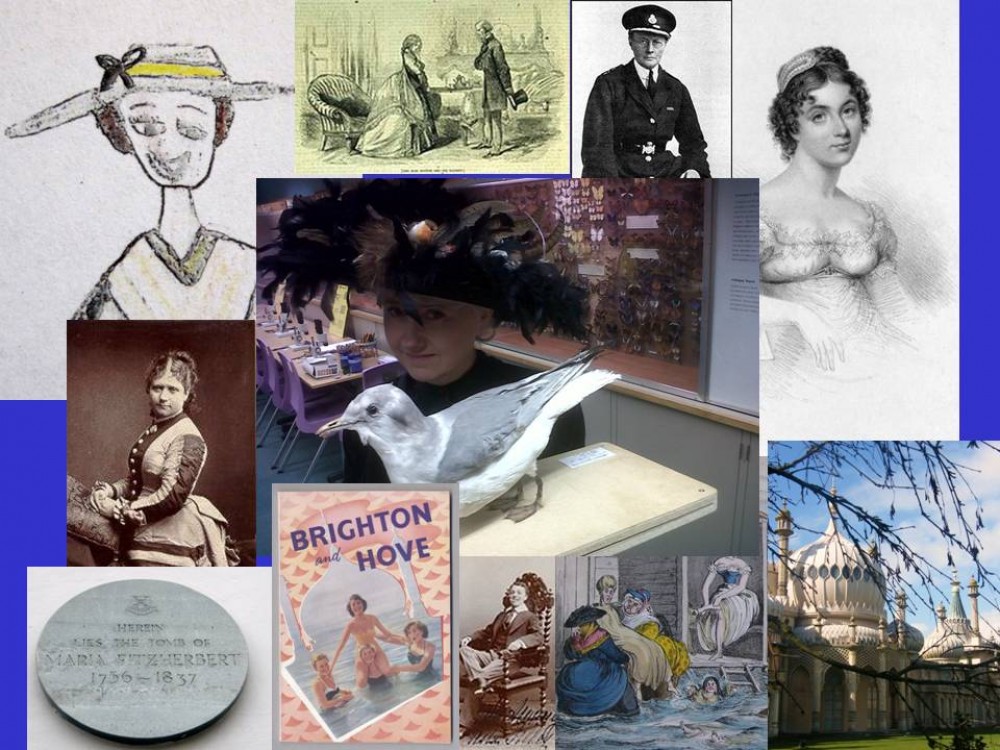
Lord and Lady Dowding and friends.
Happy birthday to the Bodyshop, a female-fronted, local company who, this year, is celebrating its 40th year. Started in 1976 by Littlehampton born Dame Anita Roddick, its first premises was a small shop in Brighton’s North Laine, from where it didn’t take long for its ethically produced skin and beauty products to carve a niche for itself, as well as fill every teenager’s bedroom with the scent of coconut hairgel and Dewberry perfume. Although the company was taken over by L’Oreal in 2006 ,Anita Roddick is rightly remembered as a fearless entrepreneur who brought fairtrade and products not tested on animals into the mainstream and showed that business can have morals.
But 20 years before our high streets started to be populated by those well-known green facades, another company was prioritising animal welfare, and at the helm, another pioneering woman with Brighton and Hove connections.
Beauty Without Cruelty, a company still supplying cruelty free cosmetics today was founded in 1963 by the trustees of an animal welfare organisation of the same name. The original driving force of the cosmetics arm was Kathleen Long, an animal welfare activist who, with Noel Gabriel developed the first line of revolutionary cruelty-free products. When Kathleen died in 1969, one of the trustees, Lady Muriel Dowding, who in her later years relocated to Hove, came to the rescue and, under her energetic leadership, the company grew and flourished.

Muriel Dowding, born in London in 1908, was an intriguing, committed woman, who according to her obituary in The Independent newspaper in 1993, ‘didn’t allow anything that might help the plight of animals escape her attention’. At one time she was vice-president of the Royal Society for the Prevention of Cruelty to Animals and president of the National Anti-Vivisection Society. At the helm of the Beauty Without Cruelty campaigning organisation, she worked tirelessly to make people aware of the unsavoury, animal derived ingredients in their everyday products – whale oil in lipstics, for example, and civet in perfume. Hard to imagine in our better informed days, but in the 1950s and ’60s most consumers would have been unaware of the ingredients in their everyday face soaps and shampoos. Muriel’s work to increase awareness created an unprecedented demand for an alternative. The Beauty Without Cruelty cosmetics brand, like Bodyshop, offering people an easily obtainable and cheap alternative to the mainstream, enjoyed a particular heyday in the 1960s when the colourful nail varnishes and eye shadows gained celebrity followers such as popular model, Celia Hammond. Similarly, at a time when a fur coat was the must have fashion statement for the wealthy, Muriel would organise fake fur fashion shows to demonstrate, as her brand outlined, that cruelty need not be a by-product for beauty.
Muriel was also no stranger to unconventional ideas in her personal life. A committed spiritualist she met her second husband, Air Chief Marshall Sir Hugh Dowding, one of the architects of the Battle of Britain, when, knowing he shared her views, she asked him to contact her first husband, Jack Maxwell Whiting who had gone missing in action over Denmark in 1944. Following their marriage in 1951, Sir Hugh, already a vegetarian and anti-vivisectionist joined Muriel in her work to prevent animal suffering. Apparently, the house the animal loving pair shared in Tunbridge Wells, became a sanctuary for stray animals and the two became notorious for putting on lavish Sunday lunch parties to show people how tasty vegetarian food could be. Muriel’s obituary published just after her death in Hove in November 1993 notes that she was ‘ a warm, open-hearted character with a larger than life personality and sometimes uncompromising opinions.’ It paints a picture of a committed woman who threw herself wholeheartedly into the cause she believed in. She remained director of Beauty Without Cruelty until 1980.
I suppose you could say that, coming to live in a Hove nursing home towards the end of her life, Muriel only qualifies very slimly for a place in the Brighton and Hove Historical Women’s Hall of Fame, but as our city’s past is bursting with women who pioneered new ideas and stood up for their views, however unconventional, Lady Muriel Dowding, has found the perfect home.






